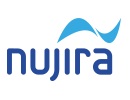Benefits of ET for IoT applications
 Reduced peak current
Reduced peak current- Increased transmit power
- Better coverage
- Longer battery life
- Enables single-chip CMOS solutions
- Improved performance under antenna mismatch
- Broadband platforms
- Simplifies or eliminates the need for DPD
WiFi for connected devices
With WiFi now becoming ubiquitous for in-home internet connectivity, many connected devices are now choosing to incorporate WiFi for their connection to the cloud, eliminating the need for intermediate hubs and gateways.
However, even low power WiFi requires significant peak currents during transmission, putting a significant burden on the battery.
With today’s WiFi PAs only achieving efficiencies of 10% or lower, ET can offer significant benefits for WiFi-connected devices.
LTE emerging for M2M
With the prospect of 2G networks being switched off as early as 2017, LTE is starting to displace GSM/GPRS in some M2M applications. However, the issues of frequency band fragmentation and higher current consumption offer some significant engineering challenges for M2M module makers.
ET can help overcome some of the main issues associated with the transition to LTE, such as robustness to antenna mismatch, limited peak current capability, improved coverage, and the need to support multiple frequency bands in a single SKU.
Cutting peak current by up to 80%
For battery-operated IoT applications, managing peak current consumption during a transmit burst can be a real problem for the designer.
Battery size is directly proportional to peak current capability, meaning that in lower bandwidth applications the battery size is determined by the peak current in the system, rather than the overall battery capacity.
Nujira’s ET solutions for WiFi and LTE can reduce peak current requirements by up to 80%, enabling use of a smaller battery.
Better coverage, even into a poorly matched antenna
In many IoT applications, limited physical space or a constrained operating environment can significantly compromise the antenna performance. Nujira’s IsoGain ET maintains linearity, keeping the connection alive even into a severe antenna mismatch.
Connected devices are often installed in locations of poor wireless coverage, or may be integrated into a larger product which degrades the performance of the wireless link. Our ET solutions boost RF output power, maximising wireless coverage for reliable, fast connections.
Eliminating the need for DPD
For small, low-cost applications, Digital PreDistortion is an expensive luxury, in terms of both cost and power consumption. Nujira’s IsoGain ET can provide zero-overhead linearization of the PA, eliminating the need for DPD in WiFi and LTE applications.
Enabling integrated CMOS PAs
For truly ubiquitous connectivity, the RF power amplifier must eventually be integrated into the System-on-Chip.
While on-chip CMOS PAs can be made to work for low power, low bandwidth air interfaces such as Bluetooth LE and Zigbee, higher data rate standards like WiFi and LTE require significantly greater linearity and output power.
CMOS PAs are inherently unsuitable for these applications, due to their poor linearity. Today’s integrated WiFi PAs only achieve energy efficiencies of a few percent, resulting in limited output power, poor coverage, and excessive heat dissipation.
Nujira’s ET architecture dramatically boosts the performance of integrated CMOS PAs, transforming the viability of single-chip CMOS solutions for the Internet of Things.
